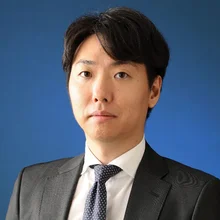
Interest rate derivatives house of the year: Goldman Sachs
Asia Risk Awards 2020

As turmoil has whirled around markets, Goldman Sachs has continued to demonstrate its capability of providing both robust asset liability management solutions as well as forward-looking guidance on the Libor transition across different markets in Asia. The bank works closely with its clients to help them manage the risks associated with moving to a new benchmark, as well as helping them identify new market opportunities.
With low rates likely to persist well into the future, Goldman Sachs has continued to expand its emerging markets rates offerings across both vanilla and more exotic payoff structures.
Japanese duration mismatch
The Japan team has been particularly active in helping life insurance clients hedge their foreign currency assets and liabilities. This is in anticipation of a new economic value-based solvency ratio that the country’s Financial Services Agency (FSA) plans to roll out at the start of 2025.
Yusuke Ochi, an executive director in rates structuring and strategies at Goldman Sachs, says that the new regulation will consume a lot more capital for those life insurers that are still running large-duration gaps between their assets and liabilities.
This is a particular issue for the large numbers of firms that, faced with a negative yield environment at home, have been forced to seek investments abroad in order to match their yen-denominated liabilities.
We have proposed various types of hedging solutions, from simple derivatives instruments to structured products, and we are leading strategic transactions in this space
Yusuke Ochi, Goldman Sachs
Goldman Sachs points out that many of these Japanese life insurance firms have guaranteed interest rates on liabilities that were higher than market yields on Japanese government bonds. As a result, insurers have steadily increased foreign bond positions over the past few years, both on FX hedged and unhedged bases.
This means that, as interest rate differentials change, the duration mismatch could potentially become more pronounced.
“Under the current regulation, the risk of the duration gap is not fairly considered in the solvency margin ratio calculation,” says Ochi. “But under the new regulation, [insurers] need to calculate the present value of the liability side and asset side as well. This means they need to calculate the duration gap.”
Goldman Sachs leveraged on its deep insight into the new regulation and used rates derivatives to mitigate the duration gap, which reduces the capital requirement for life insurers.
Ochi estimates that the Japanese life insurance industry is currently running a four-year duration gap, which needs to be closed before the 2025 deadline. He says that the largest risk for these firms relates to interest rates.
“We have proposed various types of hedging solutions, from simple derivatives instruments to structured products, and we are leading strategic transactions in this space,” says Ochi.
Goldman Sachs says that it has executed various FX hedging such as forwards, cross-currency, options and proxy hedge ideas for Japanese life insurers.
The bank declines to divulge details of specific past transactions, in order to maintain client confidentiality, but says that “the solutions helped the clients to reduce the regulatory risk amount from FX positions in a cost-efficient way”.

Besides FX hedging, Goldman Sachs is also advising life insurers on how to hedge interest rate risk in their books in efficient ways regarding the regulatory and cost perspectives.
“Life insurance companies have some complexities in their liabilities, since they are providing various types of insurance products and giving some options to policy-holders,” says Ochi. Such options can include things such as early termination of insurance contracts.
After consulting with clients, Goldman Sachs executed customised derivatives transactions with their life insurance clients to address these challenges.
The bank started helping life insurers in Japan prepare for the new solvency regulation a few years ago, and has seen increasing interest from firms as the 2025 deadline draws closer. Goldman Sachs says that it now has a “significant” share of the derivatives market executed by Japanese life insurance companies.
Funding opportunities
Despite Japan’s banking sector being highly competitive, with the three domestic megabanks all vying for a slice of the pie, Goldman Sachs has continued winning market share. Cedric Podevin, head of structuring and strategy for Asia within the fixed income currencies commodities team, puts this down to having a deep insight into the rates derivatives market and to maintaining a close relationship with clients.
“You would think that there is no opportunity to do financing in Japan, since this is probably one of the most overbanked markets in the world. You have all these regional banks, you have the big banks, and you have a lot of savings,” he says. “But, even in a market like Japan, there are financing transaction opportunities.
A particularly hot opportunity is for US dollar funding, which remains a critical issue for Japanese banks as they try to expand in the offshore market. But many of these banks also have a duration mismatch, says Ochi, with their funding being mainly short-dated and their assets being long-dated.
“If they take long-dated funding, it is expensive in the cross-currency basis market,” says Ochi. “Our solution is to give them options to enter short-dated cross-currency trades at any point within five years, so they can treat this as a five-year funding while the cost is short-dated.”
Such funding facility trades have enabled Japanese banks to retain a good amount of funding sources during the pandemic, which came in particularly handy during the market upheaval of March and April, says Goldman Sachs.
Libor transition
The bank is also using its extensive experience and global footprint to help clients across Asia with the Libor transition, both in terms of preparation for the new benchmark rate and identifying opportunities from the transition.
Publication of the Libor benchmark is likely to cease at the end of 2021, once regulators stop compelling banks to submit quotes to the rate-setting panel. Once this happens, firms with Libor exposures will have to switch to an alternative reference rate.
It is taking a particular leadership role in Japan, with representation on the Cross-Industry Committee on Japanese Yen Interest Rate Benchmarks, convened by the Bank of Japan. Ochi says that, at first, progress was slow in Japan, as there was a perception that the Tokyo interbank offered rate would be the preferred replacement rate, but now clients are showing increasing interest in the Libor transition as policy-makers lean more towards a risk-free rate.
Most of the real money clients and corporate clients are very active in terms of thinking of how to deal with the [Libor] transition
Yusuke Ochi, Goldman Sachs
“The BoJ committee decided that the movement is more heading into risk-free rates, publishing a transition road map into end-2021,” he adds. “These days, especially within the last two months, most of the real money clients and corporate clients are very active in terms of thinking of how to deal with the transition.”
According to the BoJ’s transition road map, released in August, new loans referencing Libor will cease to be issued in the second quarter of 2021, and exiting financial products dependent on the fading benchmark will be reduced during the following quarter.
“We have reached out to thousands of clients globally on this topic in the last year via seminars, webcasts and also one-on-one meetings,” says Ochi. “Our contents cover everything from industry-wide progress to detailed analysis. We are also making clients aware of current market dislocation.”
Other innovations
Goldman Sachs has continued to innovate and expand its suite of emerging market rate products during the past 12 months.
Earlier this year, with the US dollar and South Korean won curve going lower and flattening, the bank saw increasing demand for higher-yielding underlyings among institutional investors. It proposed and executed structured products linked to Korean won and dollar rates, demonstrating its ability to recycle illiquid exotic risks.
Goldman Sachs is also one of the first dealers to offer electronic trading on Korean won interest rate swaps, which started this year. The bank says that electronic trading of rates products is growing quickly throughout Asia, and Goldman Sachs wants to be there to meet client needs across the continent as it does so.

“We are seeing more and more clients actually wanting to see the trading [done] electronically. We continue to [lead] the offerings for electronic trading in the Asian interest rate products space, as we can see with the Korean won offering,” says Georg von Wowern, executive director in macro structuring. “We are trying to make as many currencies as possible available for e-trading.”
In Australia, Goldman Sachs is one of the go-to banks for the superannuation pension fund industry, which needs help with its risk management strategies as it switches from using an external fund manager to doing more things internally.
“As the super funds are considering moving mandates internally, Goldman Sachs can assist with derivatives modelling, data and global market access,” says von Wowern.
In terms of trades, Goldman Sachs says it has executed various different transactions to help super funds improve their liability management. The bank has also helped a number of them with index replication, which is gaining in popularity within the industry.
“We’ve done this for several real money clients in Australia, via futures or other derivatives,” says von Wowern.
Only users who have a paid subscription or are part of a corporate subscription are able to print or copy content.
To access these options, along with all other subscription benefits, please contact info@risk.net or view our subscription options here: http://subscriptions.risk.net/subscribe
You are currently unable to print this content. Please contact info@risk.net to find out more.
You are currently unable to copy this content. Please contact info@risk.net to find out more.
Copyright Infopro Digital Limited. All rights reserved.
As outlined in our terms and conditions, https://www.infopro-digital.com/terms-and-conditions/subscriptions/ (point 2.4), printing is limited to a single copy.
If you would like to purchase additional rights please email info@risk.net
Copyright Infopro Digital Limited. All rights reserved.
You may share this content using our article tools. As outlined in our terms and conditions, https://www.infopro-digital.com/terms-and-conditions/subscriptions/ (clause 2.4), an Authorised User may only make one copy of the materials for their own personal use. You must also comply with the restrictions in clause 2.5.
If you would like to purchase additional rights please email info@risk.net
More on Awards
Trading systems: structured products/cross-asset – Murex
Murex won the Trading systems: structured products/cross-asset award at the 2025 Risk Markets Technology Awards for its MX.3 platform, praised for its flexibility and advanced analytics
Best vendor for system support and implementation: Murex
Murex has won the Best vendor for system support and implementation at the Risk Markets Technology Awards, recognised for its innovative MX.3 platform, exceptional client support and seamless implementation services
FRTB-IMA product of the year: Murex
Murex wins FRTB-IMA product of the year for its advanced, scalable MX.3 platform enabling seamless regulatory compliance
Pricing and analytics: equities – Finastra
Finastra’s Sophis platform wins the Risk Markets Technology Award for Pricing and analytics in equities, recognised for its robust capabilities in equities and derivatives trading
Best execution product of the year: Tradefeedr
Tradefeedr won Best execution product of the year for its API platform, which standardises and streamlines FX trading data, enabling better performance analysis and collaboration across financial institutions
Collateral management and optimisation product of the year: LSEG Post Trade
LSEG Post Trade wins Collateral management and optimisation product of the year for interconnected services that help mitigate counterparty risk and optimise capital usage
Clearing house of the year: LCH
Risk Awards 2025: LCH outshines rivals in its commitment to innovation and co-operation with clearing members
Driving innovation in risk management and technology
ActiveViam secured three major wins at the Risk Markets Technology Awards 2025 through its commitment to innovation in risk management and technology







